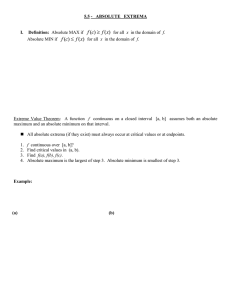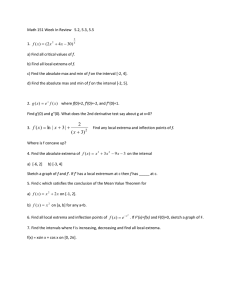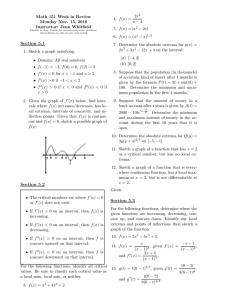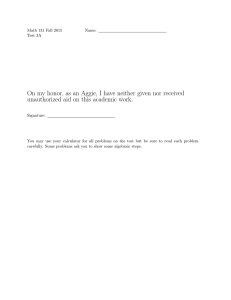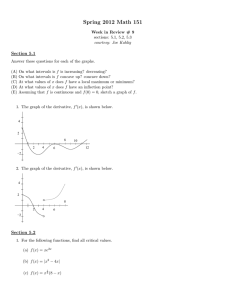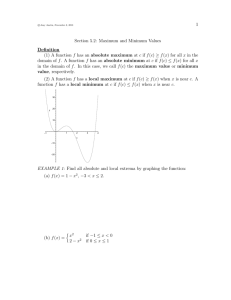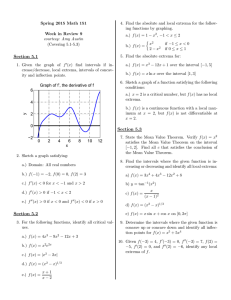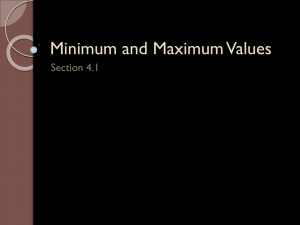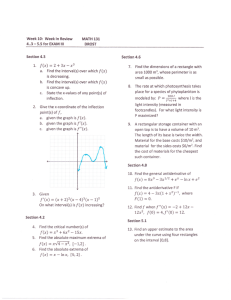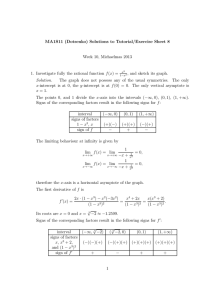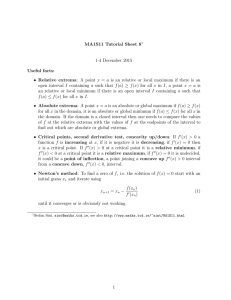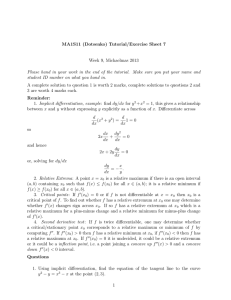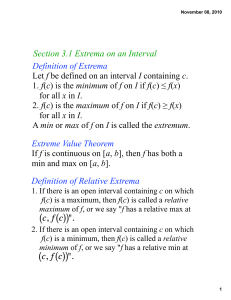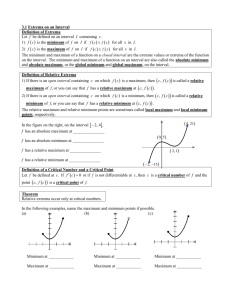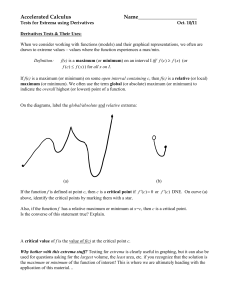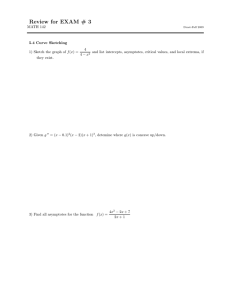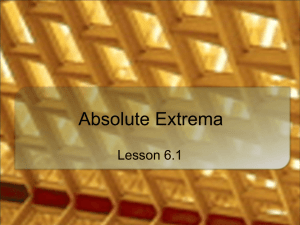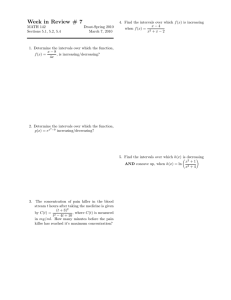MA1S11 (Dotsenko) Tutorial/Exercise Sheet 8 Week 10, Michaelmas 2013
advertisement
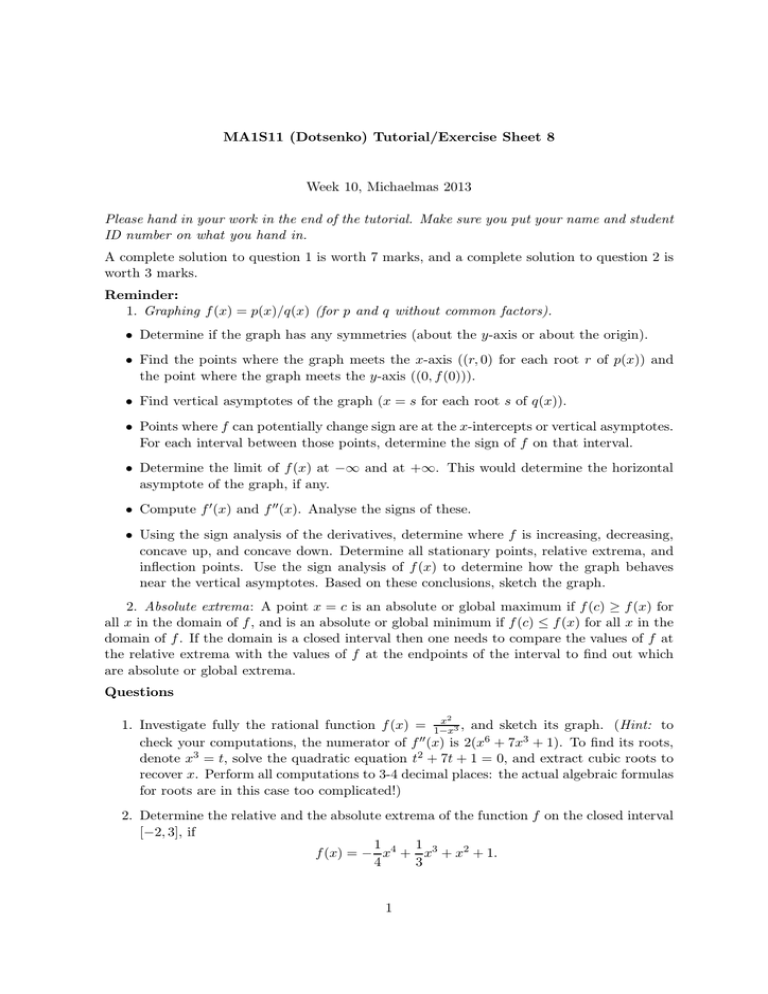
MA1S11 (Dotsenko) Tutorial/Exercise Sheet 8 Week 10, Michaelmas 2013 Please hand in your work in the end of the tutorial. Make sure you put your name and student ID number on what you hand in. A complete solution to question 1 is worth 7 marks, and a complete solution to question 2 is worth 3 marks. Reminder: 1. Graphing f (x) = p(x)/q(x) (for p and q without common factors). • Determine if the graph has any symmetries (about the y-axis or about the origin). • Find the points where the graph meets the x-axis ((r, 0) for each root r of p(x)) and the point where the graph meets the y-axis ((0, f (0))). • Find vertical asymptotes of the graph (x = s for each root s of q(x)). • Points where f can potentially change sign are at the x-intercepts or vertical asymptotes. For each interval between those points, determine the sign of f on that interval. • Determine the limit of f (x) at −∞ and at +∞. This would determine the horizontal asymptote of the graph, if any. • Compute f ′ (x) and f ′′ (x). Analyse the signs of these. • Using the sign analysis of the derivatives, determine where f is increasing, decreasing, concave up, and concave down. Determine all stationary points, relative extrema, and inflection points. Use the sign analysis of f (x) to determine how the graph behaves near the vertical asymptotes. Based on these conclusions, sketch the graph. 2. Absolute extrema: A point x = c is an absolute or global maximum if f (c) ≥ f (x) for all x in the domain of f , and is an absolute or global minimum if f (c) ≤ f (x) for all x in the domain of f . If the domain is a closed interval then one needs to compare the values of f at the relative extrema with the values of f at the endpoints of the interval to find out which are absolute or global extrema. Questions 2 x 1. Investigate fully the rational function f (x) = 1−x 3 , and sketch its graph. (Hint: to ′′ check your computations, the numerator of f (x) is 2(x6 + 7x3 + 1). To find its roots, denote x3 = t, solve the quadratic equation t2 + 7t + 1 = 0, and extract cubic roots to recover x. Perform all computations to 3-4 decimal places: the actual algebraic formulas for roots are in this case too complicated!) 2. Determine the relative and the absolute extrema of the function f on the closed interval [−2, 3], if 1 1 f (x) = − x4 + x3 + x2 + 1. 4 3 1
